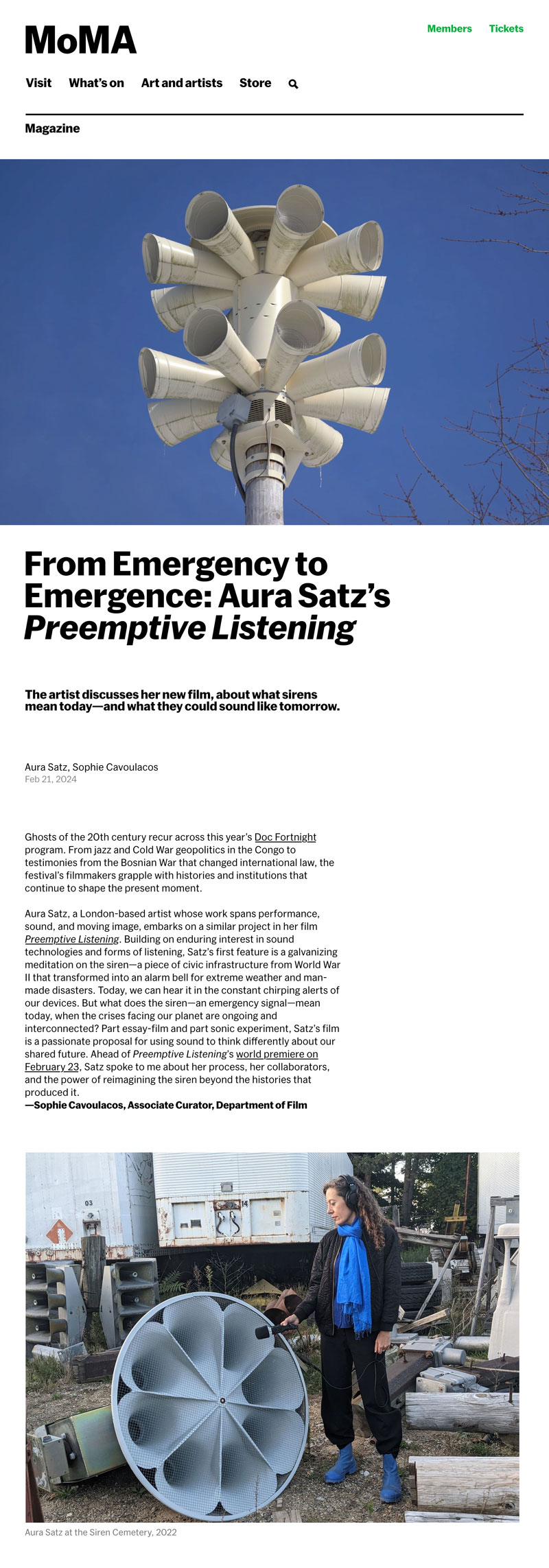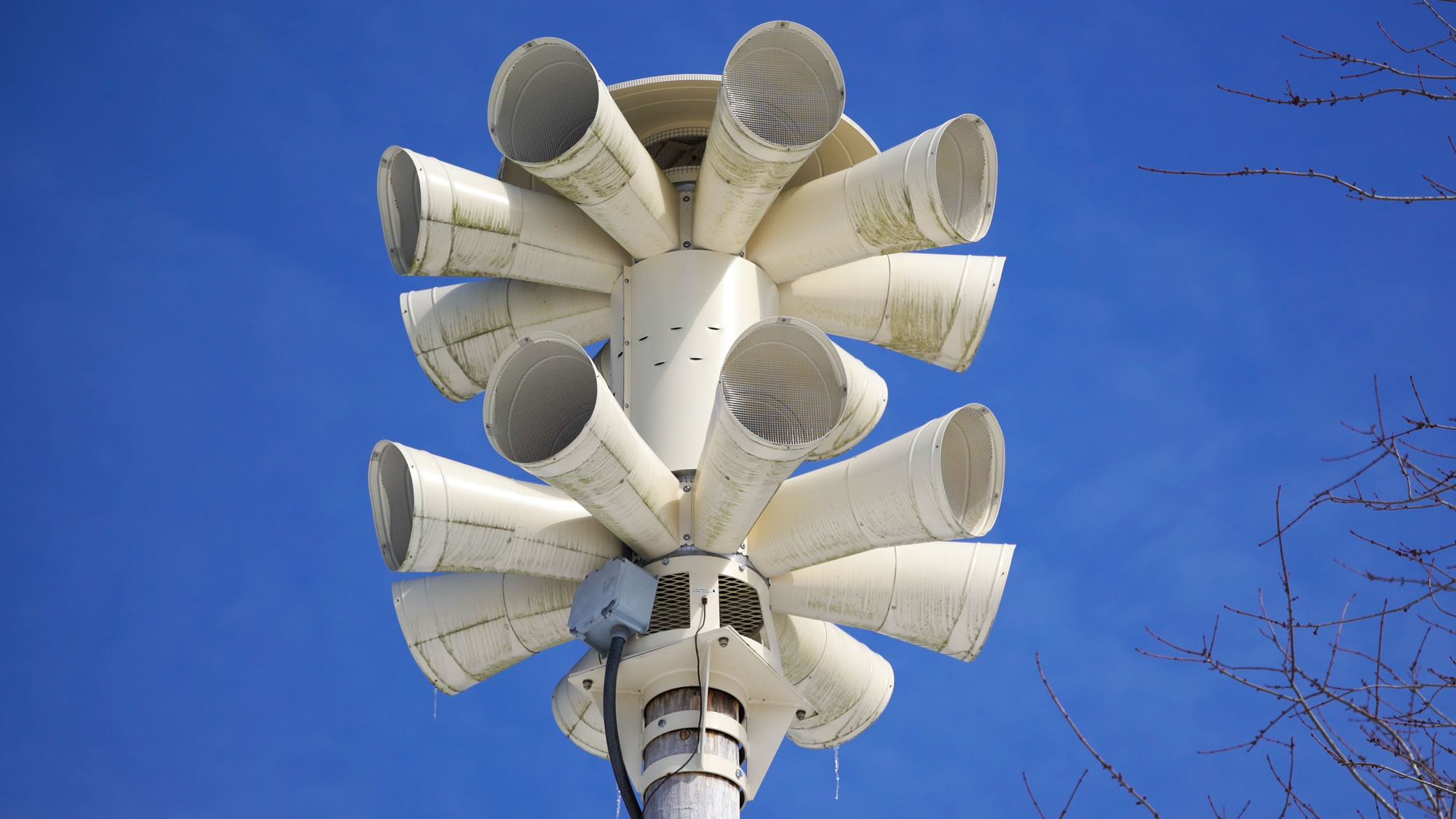From Emergency to Emergence: Aura Satz’s Preemptive Listening
Ghosts of the 20th century recur across this year’s Doc Fortnight program. From jazz and Cold War geopolitics in the Congo to testimonies from the Bosnian War that changed international law, the festival’s filmmakers grapple with histories and institutions that continue to shape the present moment.
Aura Satz, a London-based artist whose work spans performance, sound, and moving image, embarks on a similar project in her film Preemptive Listening. Building on enduring interest in sound technologies and forms of listening, Satz’s first feature is a galvanizing meditation on the siren—a piece of civic infrastructure from World War II that transformed into an alarm bell for extreme weather and man-made disasters. Today, we can hear it in the constant chirping alerts of our devices. But what does the siren—an emergency signal—mean today, when the crises facing our planet are ongoing and interconnected? Part essay-film and part sonic experiment, Satz’s film is a passionate proposal for using sound to think differently about our shared future. Ahead of Preemptive Listening’s world premiere on February 23, Satz spoke to me about her process, her collaborators, and the power of reimagining the siren beyond the histories that produced it. —Sophie Cavoulacos, Associate Curator, Department of Film
I wanted to ask how you got interested in sirens. There’s this phrase I’ve heard you use in relation to the film that seems to sum it up. It’s about what you call “alarm fatigue”: “a constant state of emergency clouding our understanding of what the emergency is.”
Many of my earlier portraits of listening—of musicians such as Daphne Oram, Laurie Spiegel, and Beatriz Ferreyra—or even works I made using sine waves have a resonance with the siren’s glissando. But ultimately, and I’m sure many people can relate, there was a sonic alarm growing to a crescendo inside me, and I was propelled to go deeper. A few years earlier I had worked with readymade sound signals, like the dial tone, trying to address this familiar listening experience from a new compositional angle. This led me to wonder whether a change in the signal could somehow shift something larger. Can the tone of the warning sign set the capacity to cope? This is not such a polemical proposition. One of the advisors on the project, the cognitive psychologist Judy Edworthy, has done a lot of work on designing less stressful medical-equipment alert sounds, because people working in environments such as hospitals are experiencing alarm fatigue—something that mental health nurse and activist Asantewaa Boykin describes in the film.


